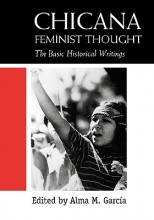Picking up on the subject of Chicana Symbols, I wanted to present one that came to mind when discussing the idea in class.

Chicana Art: Isis Rodriguez – a second-generation Latina, known in the Chicana art community for her cartoon-styled pieces. Specifically her series – Little Miss Attitude (1998), depicted Chicanas and Latinas in different ways. Although she was part of the art movement that was more about personal representation as opposed to covering the broader subject of Latina women, her works navigate through adolescence in a way many girls (especially Latina girls) can relate to. But unlike Coyolxauqui, neither her or her pieces stand as major symbols for the Chicana community, instead, Isis expresses herself through the symbols. Her pieces include images of the Virgin Mary, a native girl, and a “roughneck” chola girl, among others. All images of what a (Latina) girl has been, or could be seen as.
Thus the female symbols, like those for the Chicano movement, are varied and dynamic. Chicana feminists have taken advantage of their understanding of these women and their struggles as a way to display their current struggle.

